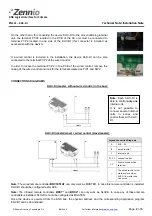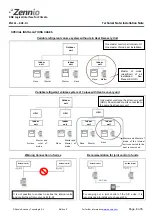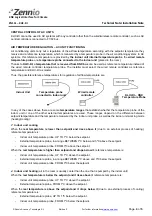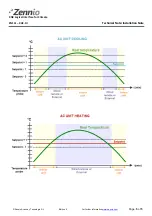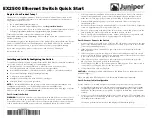
KNK
Logical
Interface
for
Climate
ZN1CL
–
KLIC
‐
DI
Technical
Note:
Installation
Note
© Zennio Avance y Tecnología S.L. Edition 5 For further information
www.zennio.com
Page.
1
of
5
INTRODUCTION
KLIC-DI
is an interface that allows a bidirectional communication between a KNX domotic system and the commercial
air-conditioning units of the commercial and industrial series.
This device controls all basic functionalities of this type of air conditioning machines as well as it handles AC unit error
codes and communication errors that may arise.
MASTER CONTROL VS. SLAVE CONTROL
The great majority of internal units of commercial series and variable refrigerant volume systems are controlled with a
wired control that is connected to the terminal P1/P2 available in these units.
KLIC-DI is compatible with the use of wired controls. Nevertheless, it is important to establish one of these controls as
master control and the other as slave control. This way, if the wired control is the master, KLIC-DI must be configured
as slave in the parameterization of the device and vice versa, if the KLIC-DI is the master control, the wired control
must be configured as slave.
Note: For configuring the wired control as master or slave: remove the casing of the
control, locate the switch marked as M/S (master/slave) in the PCB and select the
position of the switch. This switch is usually located in the lower left-hand corner or in
the upper right-hand corner. It is necessary to remove the bus and connect it again in
order to set the new configuration.
It is hardly recommended to check the configuration of the wired control when
carrying out the installation.
INSTALLATION
KLIC-DI is a device of reduced dimensions (90 x 60 x 35 mm) with two terminals for integrating air conditioning
machines of the commercial series and variable refrigerant volume units in a KNX domotic system:
EIB connector
, for its connection to KNX system
bus.
P1/P2 terminal
, for its connection to air-
conditioning internal unit through a 2-wired cable
with cross-section area lower than 0.75mm
2
.
This device does not require any external power supply, since it is fed through the KNX bus.
For installing the KLIC-DI, the device must be connected to KNX bus, through the EIB connector, in the same way as
any KNX device.
Nr
Description
1 EIB
connector
2
Programming and checking LED. For more
information about the color code, look up the
manual
3 Programming
button
4
2-wire communication terminal


